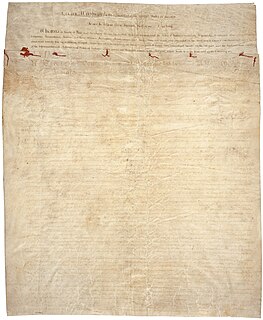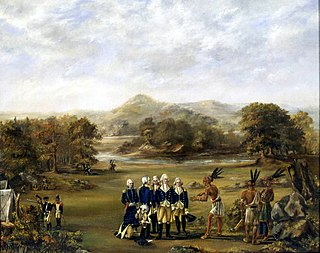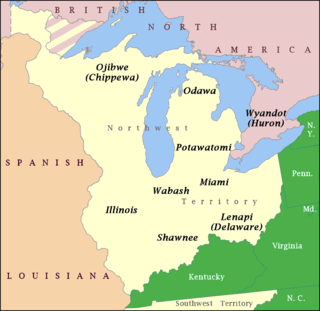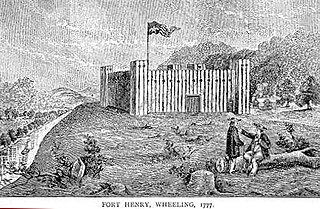Related Research Articles

Little Turtle was a Sagamore (chief) of the Miami people, who became one of the most famous Native American military leaders. Historian Wiley Sword calls him "perhaps the most capable Indian leader then in the Northwest Territory," although he later signed several treaties ceding land, which caused him to lose his leader status during the battles which became a prelude to the War of 1812. In the 1790s, Mihšihkinaahkwa led a confederation of native warriors to several major victories against U.S. forces in the Northwest Indian Wars, sometimes called "Little Turtle's War", particularly St. Clair's defeat in 1791, wherein the confederation defeated General Arthur St. Clair, who lost 900 men in the most decisive loss by the U.S. Army against Native American forces.

Upper Sandusky is a city and the county seat of Wyandot County, Ohio, United States, along the upper Sandusky River, which flows north to Sandusky Bay and Lake Erie. The city is approximately 59 mi (96 km) south of Toledo and 62 mi (99 km) north of Columbus. The population was 6,596 at the 2010 census. The city was founded in 1843 and named for an earlier Wyandot Indian village of the same name, which was located nearby. It was named "Upper" because it is located near the headwaters of the Sandusky River;

The Lenape, also called the Leni Lenape, Lenni Lenape and Delaware people, are an indigenous people of the Northeastern Woodlands, who live in the United States and Canada. Their historical territory included present-day northeastern Delaware, New Jersey and eastern Pennsylvania along the Delaware River watershed, New York City, western Long Island, and the Lower Hudson Valley. Today, Lenape people belong to the Delaware Nation and Delaware Tribe of Indians in Oklahoma; the Stockbridge-Munsee Community in Wisconsin; and the Munsee-Delaware Nation, Moravian of the Thames First Nation, and Delaware of Six Nations in Ontario.

The Battle of Fallen Timbers was the final battle of the Northwest Indian War, a struggle between Native American tribes affiliated with the Western Confederacy and their British allies, against the nascent United States for control of the Northwest Territory. The battle took place amid trees toppled by a tornado near the Maumee River in northwestern Ohio at the site of the present-day city of Maumee, Ohio.

The Treaty of Greenville, formally titled Treaty with the Wyandots, etc., was a 1795 treaty between the United States and indigenous nations of the Northwest Territory, including the Wyandot and Delaware peoples, that redefined the boundary between indigenous peoples' lands and territory for European American community settlement.

The Gnadenhutten massacre, also known as the Moravian massacre, was the killing of 96 pacifist Moravian Christian Indians by U.S. militiamen from Pennsylvania, under the command of David Williamson, on March 8, 1782 at the Moravian missionary village of Gnadenhutten, Ohio, during the American Revolutionary War.

Cornstalk was a prominent Shawnee leader in the Ohio Country in the 1760s and 1770s. His name in the Shawnee language was Hokoleskwa. Little is known about his early life. He may have been born in the Province of Pennsylvania. In 1763, he reportedly led a raid against British-American colonists in Pontiac's War. He first appears in historical documents in 1764, when he was one of the hostages surrendered to the British as part of the peace negotiations ending Pontiac's War.
Gelelemend (1737–1811) (Lenape), also known as Killbuck or John Killbuck Jr., was an important Delaware (Lenape) chief during the American Revolutionary War. He supported the rebel Americans, known as Patriots. His name signifies "a leader." He was born into the Turtle clan, which had hereditary responsibility for leadership, he became principal chief of the Lenape in November 1778, following the death of White Eyes, a war chief and Speaker of the Delaware Head Council. Gelelemend succeeded his maternal grandfather Netawatwees.

The Northwest Indian War (1785–1795), also known as the Ohio War, Little Turtle's War, and by other names, was a war between the United States and the Northwestern Confederacy, with support from the British, for control of the Northwest Territory. It followed centuries of conflict over this territory, first among Native American tribes, and then with the added shifting alliances among the tribes and the European powers of France and Great Britain, and their colonials. The United States would inherit these conflicts after their independence secured. The United States Army considers it their first of the United States Indian Wars.
George Croghan was an Irish-born fur trader in the Ohio Country of North America who became a key early figure in the region. In 1746 he was appointed to the Haudenosaunee Onondaga Council and remained so until he was banished from the frontier in 1777 during the American Revolutionary War. Emigrating from Ireland to Pennsylvania in 1741, he had become an important trader by going to the villages of Indigenous Peoples, learning their languages and customs, and working on the frontier where previously mostly French had been trading. During and after King George's War of the 1740s, he helped negotiate new treaties and alliances for the British with Native Americans.

The Western theater of the American Revolutionary War (1775–1783) was the area of conflict west of the Appalachian Mountains, the region which became the Northwest Territory of the United States as well as the states of Kentucky, Tennessee, Missouri and Spanish Louisiana. The western war was fought between American Indians with their British allies in Detroit, and American settlers south and east of the Ohio River, and also the Spanish as allies of the latter.
White Eyes, named Koquethagechton, was a leader of the Lenape (Delaware) people in the Ohio Country during the era of the American Revolution. Sometimes known as George White Eyes, or Captain Grey Eyes al. Sir William, his given name in Lenape was rendered in many spelling variations in colonial records.

The Treaty of Fort Pitt, also known as the Treaty With the Delawares, the Delaware Treaty, or the Fourth Treaty of Pittsburgh, was signed on September 17, 1778, and was the first written treaty between the new United States of America and any American Indians, in this case the Lenape. Although many informal treaties were held with Native Americans during the American Revolution from 1775 to 1783, the only one that resulted in a formal document was signed at Fort Pitt, Pennsylvania, now the site of Downtown Pittsburgh. It was essentially a formal treaty of alliance.

The Crawford expedition, also known as the Sandusky expedition and Crawford's Defeat, was a United States campaign from May to June of 1782 on the western front of the American Revolutionary War, and one of the final operations of the conflict. Led by Colonel William Crawford, the campaign's goal was to destroy enemy Native American towns along the Sandusky River in the Ohio Country, with the hope of ending Indian attacks on American settlers. The expedition was one in a long series of raids against enemy settlements which both sides had conducted throughout the war.

Fort Randolph was an American Revolutionary War fort which stood at the confluence of the Ohio and Kanawha Rivers, on the site of present-day Point Pleasant, West Virginia, USA.

The Northwestern Confederacy, or Northwestern Indian Confederacy, was a loose confederacy of Native Americans in the Great Lakes region of the United States created after the American Revolutionary War. Formally, the confederacy referred to itself as the United Indian Nations, at their Confederate Council. It was known infrequently as the Miami Confederacy since many contemporaneous federal officials overestimated the influence and numerical strength of the Miami tribes based on the size of their principal city, Kekionga.
Nicholas Orontony was an 18th-century Wyandot leader who, in the years before the French and Indian War, tried to escape the domination of New France over Native people in the Detroit region by resettling in the Ohio country and forming an anti-French tribal coalition. His efforts at trying to organize armed resistance to a European power, culminating in events in 1747 sometimes known as the "Conspiracy of Nicholas", made him a forerunner of more famous Native leaders in the region such as Pontiac, Blue Jacket, and Tecumseh.

Captain Pipe (Lenape), called Konieschquanoheel and also known as Hopocan in Lenape, was an 18th-century chief of the Algonquian-speaking Lenape (Delaware) and a member of the Wolf Clan. He succeeded his maternal uncle Custaloga as chief by 1773. Likely born in present-day Pennsylvania, he later migrated with his people into eastern Ohio.

The siege of Fort Henry was an attack on American militiamen during the American Revolutionary War near the Virginia outpost known as Fort Henry by a mixed band of Indians in September 1777. The fort, named for Virginia Governor Patrick Henry, was at first defended by only a small number of militia, as rumors of the Indian attack had moved faster than the Indians, and a number of militia companies had left the fort. The American settlers were successful in repulsing the Indian attack.

Muskingum was a Wyandot village in southeastern Ohio from 1747 to 1755. It was an important trade center in the early 1750s, until it was devastated by smallpox in the winter of 1752. The town was repopulated for a short time afterwards, then abandoned again as a new community was established by Netawatwees a few miles to the east at Gekelukpechink. The city of Coshocton, Ohio was founded close to the site of the village in 1802.
References
- ↑ Earl P. Olmstead (1991). Blackcoats Among the Delaware: David Zeisberger on the Ohio Frontier. Kent State University Press. p. 26. ISBN 978-0-87338-434-6 . Retrieved February 18, 2013.
- 1 2 Bruce Elliott Johansen; Barbara Alice Mann (2000). Encyclopedia of the Haudenosaunee (Iroquois Confederacy). Greenwood Publishing Group. pp. 141–. ISBN 978-0-313-30880-2 . Retrieved February 18, 2013.
- ↑ "Huron Indian Chiefs and Leaders: Half King". Access Genealogy. Retrieved February 18, 2013.
- ↑ "Fort Randolph". Global Gazetter of American Revolution. Retrieved February 18, 2013.
- ↑ Brickner, David D. "George Foulkes: The Story of an Unsung Legend". Archiving Early America. Archived from the original on April 9, 2013. Retrieved June 11, 2020.CS1 maint: unfit URL (link)
- ↑ "Little Turtle". Facts On File History Database Center. Retrieved February 18, 2013.